

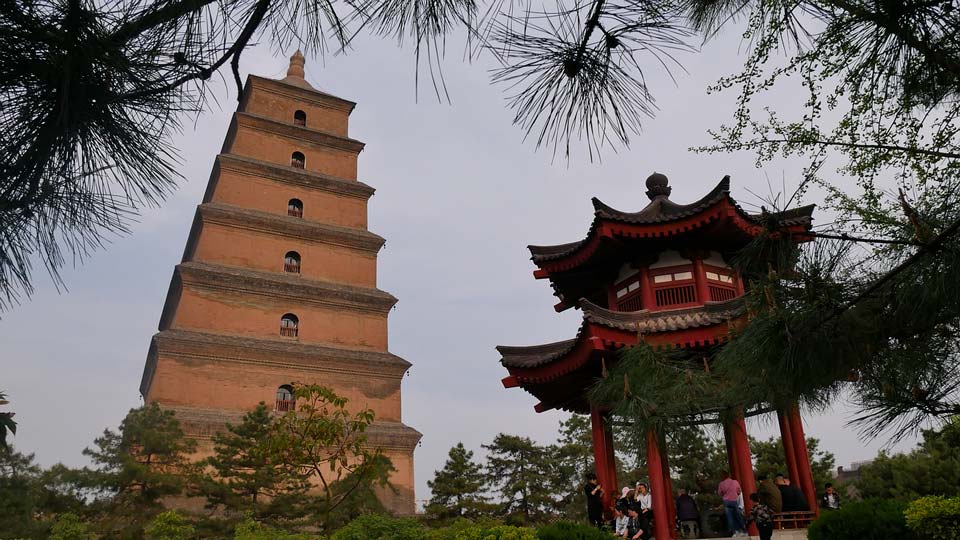
The Giant Wild Goose Pagoda is an iconic landmark in the Shaanxi region of China. Whether you’re a history enthusiast or simply curious about this magnificent structure, we have compiled a list of frequently asked questions that will hopefully help quench your thirst for knowledge. So, let’s dive in!
To understand the Giant Wild Goose Pagoda, it’s important to grasp the concept of a pagoda. A pagoda is a tower-like structure with multiple tiers, commonly found in Asian countries.
In Chinese architecture, pagodas are renowned for their graceful design and spiritual symbolism. They often serve as a place of worship and are associated with Buddhist traditions. The intricate construction and unique shape of pagodas are a reflection of ancient Chinese craftsmanship and their reverence for the divine.
The Giant Wild Goose Pagoda is located in the city of Xi’an, the capital of Shaanxi province in China. Situated within the grounds of the Daci’en Temple, the pagoda is nestled in a serene environment that exudes tranquility.
Xi’an, once known as Chang’an, was the ancient capital of multiple dynasties, including the Tang Dynasty. Its strategic location on the Silk Road made it a thriving center of culture, commerce, and spirituality.
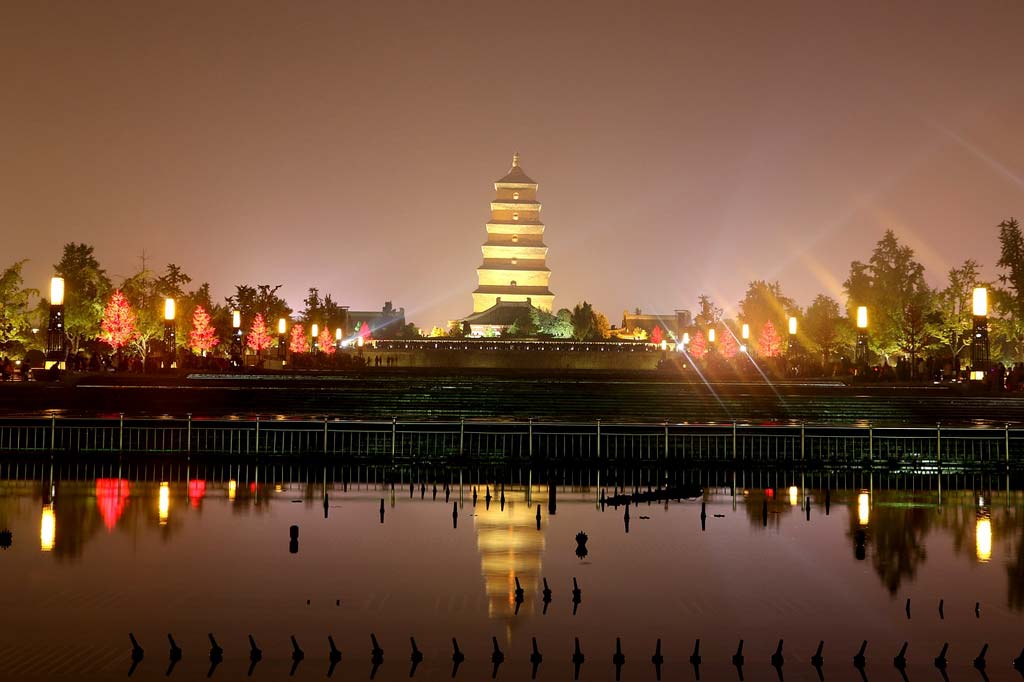
The Giant Wild Goose Pagoda was built during the Tang Dynasty, between 649 and 683 but was unfortunately damaged in an earthquake, luckily it was rebuilt later between 707 and 709 AD and even had 5 stories added in the reconstruction.
This era marked a golden age in Chinese history, characterized by cultural and intellectual advancements. Emperor Gaozong of the Tang Dynasty commissioned the pagoda’s construction as an expression of gratitude to the eminent monk Xuanzang, who had embarked on a perilous journey to India to obtain sacred Buddhist scriptures and relics.
The pagoda was originally constructed to house Buddhist scriptures and relics brought from India by the renowned monk Xuanzang. Xuanzang’s remarkable pilgrimage to India, vividly depicted in the classic novel “Journey to the West,” inspired the construction of this pagoda as a repository of his sacred treasures. The purpose of the pagoda was to preserve and promote the teachings of Buddhism, which had a profound influence on Chinese culture and spirituality.
The Giant Wild Goose Pagoda stands at an impressive height of 64.5 meters (211.6 feet) and consists of seven stories. The architectural design embodies a fusion of Chinese and Indian influences, with each story diminishing in size as it ascends. The pagoda’s construction follows a precise system of bracketing and interlocking wooden beams, which provide structural stability and give it an elegant appearance.
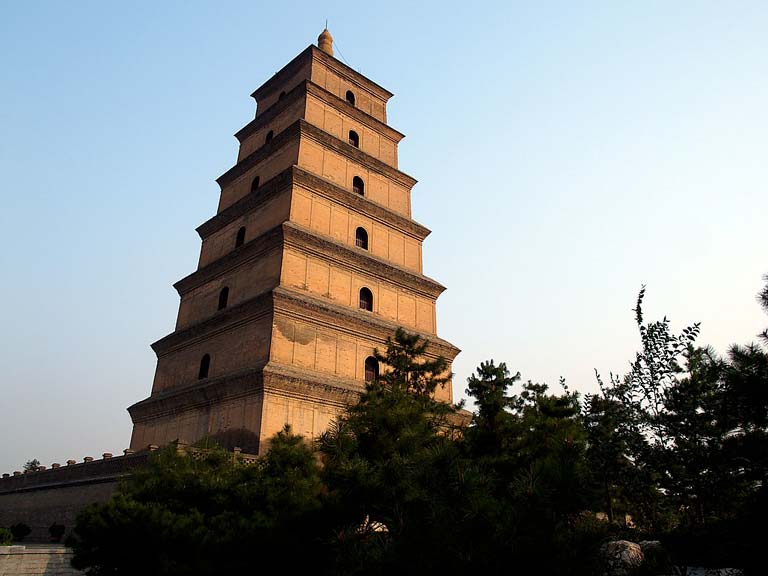
The origin of the name ” Giant Wild Goose Pagoda” is rooted in an intriguing legend that has been passed down through generations. According to ancient Buddhist stories, there were two branches of monks, one of which did not observe a strict vegetarian diet. One day, when this particular branch of monks was unable to find any meat to fulfill their dietary preferences, they looked up to the sky and noticed a group of big wild geese flying by.
In a hopeful plea, one of the monks silently said, “Today, we have no meat. I hope the merciful Bodhisattva will give us some.” Astonishingly, right as he said that the leading wild goose broke its wings and fell to the ground. This miraculous event startled all the witnessing monks, who interpreted it as a sign from the Bodhisattva, urging them to practice greater piety and devotion.
Inspired by this spiritual encounter, the monks established the pagoda at the precise spot where the wild goose fell. They renounced their consumption of meat and embraced a vegetarian lifestyle as an expression of their newfound reverence. Consequently, the pagoda earned the name ” Giant Wild Goose Pagoda,” paying homage to the divine incident that had transpired.
The Giant Wild Goose Pagoda is known by several alternative names. In Chinese, it is referred to as “Dayan Pagoda,” which means “Big Wild Goose Pagoda.” This name emphasizes the pagoda’s grandeur and magnificence. Additionally, it is also called “Xuanzang Pagoda” in honor of the renowned monk Xuanzang, whose contributions to Buddhism greatly influenced the pagoda’s construction and purpose.
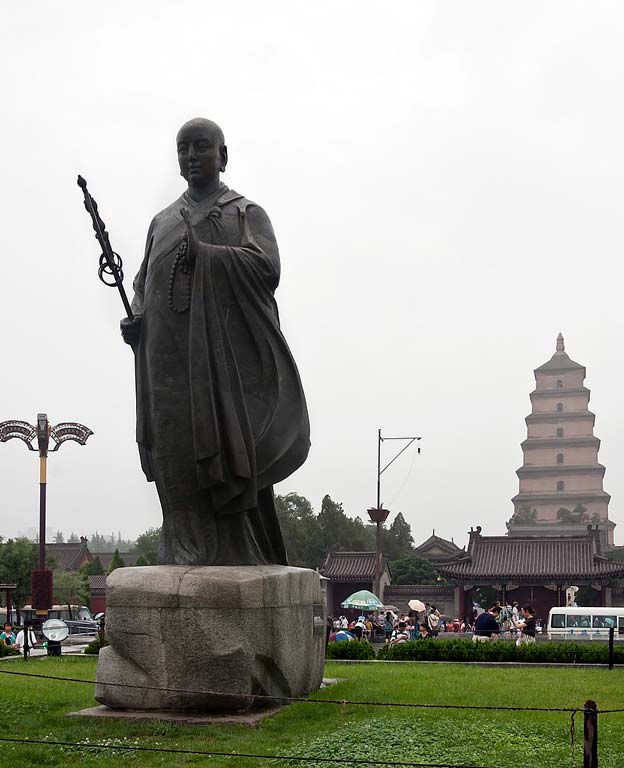
The Giant Wild Goose Pagoda is closely associated with the Daci’en Temple, which provides an enchanting backdrop to this magnificent structure. The temple complex served as a hub for Buddhist activities during the Tang Dynasty and remains a prominent spiritual center to this day. The Daci’en Temple showcases intricate architectural details and serene courtyards, offering visitors an immersive experience into the vibrant spiritual culture of ancient China.
The Giant Wild Goose Pagoda holds immense cultural significance and a profound legacy. It symbolizes the historical and spiritual ties between China and India, as well as the dissemination of Buddhist teachings. The pagoda has attracted countless pilgrims over the centuries, who journeyed to pay homage to the sacred relics housed within its walls. The architectural beauty and historical importance of the pagoda led to its recognition as a UNESCO World Heritage Site, ensuring its preservation for future generations.
The pagoda’s cultural significance extends beyond its religious symbolism. It has served as a source of inspiration for countless artists, poets, and writers throughout history. The iconic silhouette of the pagoda has been depicted in various forms of art, including paintings, calligraphy, and even contemporary media. Its serene presence against the backdrop of Xi’an’s bustling cityscape serves as a reminder of China’s rich heritage and the enduring power of human creativity.

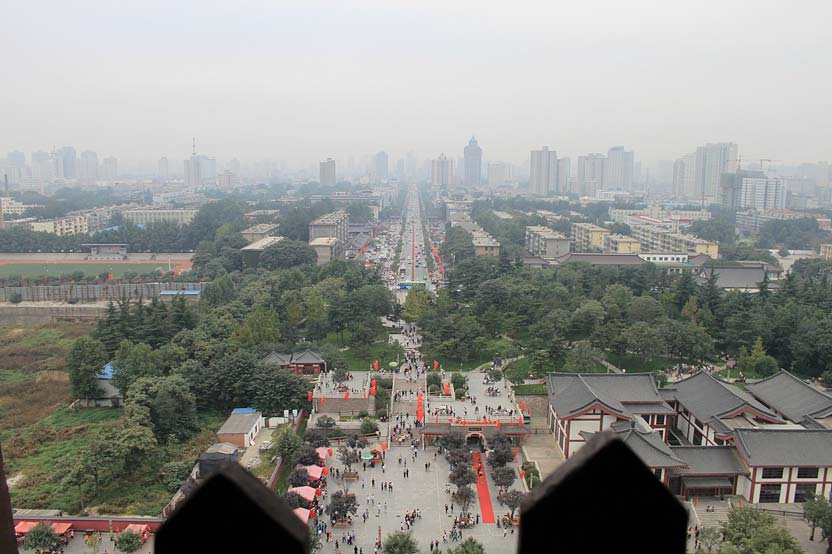
As we conclude our journey through the Giant Wild Goose Pagoda’s frequently asked questions, we hope that we’ve shed light on its interesting history and cultural significance. This remarkable structure stands as a testament to China’s rich heritage and serves as a bridge between different cultures and religions. The Giant Wild Goose Pagoda invites you to explore the vibrant tapestry of Chinese history and spirituality, offering a glimpse into the achievements and aspirations of the Tang Dynasty.
So, plan your visit to the Giant Wild Goose Pagoda and embark on a remarkable journey through time, where ancient wisdom and architectural brilliance await your discovery.
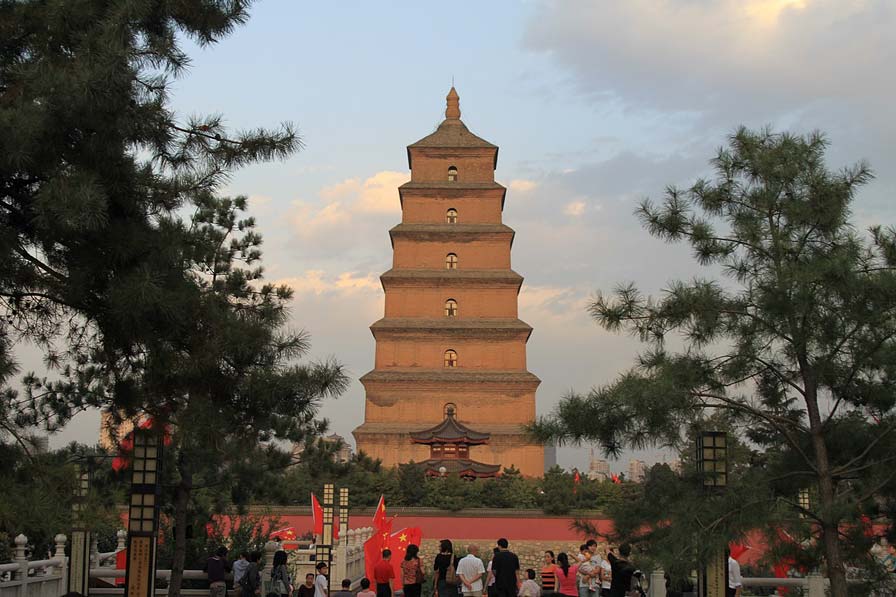
Related Articles:
Xi’an FAQs: Exploring China’s Ancient Capital City!
Exploring the 6 UNESCO World Heritage Sites in Xi’an!
The Small Wild Goose Pagoda: Answering 7 FAQs!
Xingjiao Temple Pagoda: Exploring a Symbol of the Silk Road!
What is a Pagoda? Exploring these Iconic Asian Towers!
China’s UNESCO World Heritage Sites: A Complete A-Z List!
UNESCO World Heritage Sites: The Ultimate Guide!